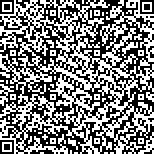| 摘要: |
| [摘要] 目的 探讨误诊为肺癌的继发性肺弥漫大B细胞淋巴瘤(SPDLBCL)的临床特点和误诊原因。方法 对收治的9例初诊为肺癌,后经病理确诊的SPDLBCL患者的临床资料进行回顾性分析。结果 9例患者中,男女比例为5∶4。既往否认吸烟史。6例既往无免疫系统疾病。主要症状为咳嗽、咳痰、发热、气喘、胸痛、声音嘶哑,主要体征为浅表淋巴结肿大,呼吸音减低及肺部湿性啰音。实验室检查6例外周血淋巴细胞计数下降,8例乳酸脱氢酶(LDH)升高。CT发现肺部肿块7例(1例多发),6例可见周围磨玻璃影,3例可见支气管狭窄,3例可见胸腔积液,6例可见肺门、纵隔淋巴结肿大;多发结节2例,位于双肺,1例可见肺门、纵隔淋巴结肿大。7例行增强CT检查,1例未见强化,1例明显强化,1例轻度强化,4例不均匀强化。确诊方式:4例行淋巴结活检,3例行CT引导下肺穿刺,2例行气管镜,经病理结合免疫组化确诊为SPDLBCL。结论 SPDLBCL临床少见,临床和影像学缺乏特异性,极易误诊。当患者血LDH升高,而CT检查肺内结节肿块边缘不规则,不均匀强化,伴周围磨玻璃影的出现,提示SPDLBCL可能,最终确诊需结合病理及免疫组织化学检查。 |
| 关键词: 弥漫大B细胞淋巴瘤 肺肿瘤 继发性 误诊 |
| DOI:10.3969/j.issn.1674-3806.2019.01.17 |
| 分类号:R 73 |
| 基金项目: |
|
| Clinical analysis of secondary pulmonary diffuse large B-cell lymphoma misdiagnosed as lung cancer |
|
ZHANG Xiang-e, HUANG Song-ping
|
|
Department of Respiratory Medicine, Quanzhou First Hospital Affiliated to Fujian Medical University, Fujian 362100, China
|
| Abstract: |
| [Abstract] Objective To study the clinical characteristics of secondary pulmonary diffuse large B-Cell lymphoma(SPDLBCL) misdiagnosed as lung cancer and the causes of misdiagnosis. Methods The clinical data of 9 SPDLBCL patients who were misdiagnosed as lung cancer in our hospital were retrospectively analyzed. Results There were 5 males and 4 females(5∶4), without a history of smoking. 6 patients had no previous immune system disease. The main symptoms were cough, expectoration, fever, wheeze, chest pain and hoarse voice and the main signs were superficial lymph node enlargement, decreased breath sounds and rales in the side of the lungs. Laboratory examination demonstrated decreased lymphocyte counts in 6 cases while elevated lactic acid dehydrogenase(LDH) in 8 cases. Chest CT showed tumors in 7cases(multiple in 1 case), patchy shadows in 6 cases, bronchostenosis in 3 cases, pleural effusion in 3 cases, and enlarged mediastinal or hilar lymph nodes in 6 cases. CT scan depicted multiple nodules located in bilateral lungs in 2 cases, enlarged mediastinal or hilar lymph nodes in 1 case. 7 cases were formed enhanced CT scans and the lesions showed no enhancement in 1 case, obvious enhancement in 1 case and uneven enhancement in 4 cases. All the cases were diagnosed as SPDLBCL by pathology and immunohistochemistry, among whom 4 cases were diagnosed by lymph node biopsy, 3 patients by CT-guided percutaneous pulmonary biopsy and 2 patients by tracheoscopy. Conclusion SPDLBCL is rare clinically and CT can not provide a definitive diagnosis due to nonspecific clinical and CT findings. However, the possibility of SPDLBCL should be highly considered when the mass or nodule with irregular margin and uneven enhancement, surrounding patchy shadows are observed on the chest CT scan. The final diagnoses depend on pathological and immunohistochemical examinations. |
| Key words: Diffuse large B cell lymphoma(DLBCL) Lung neoplasms Secondary Misdiagnosis |

